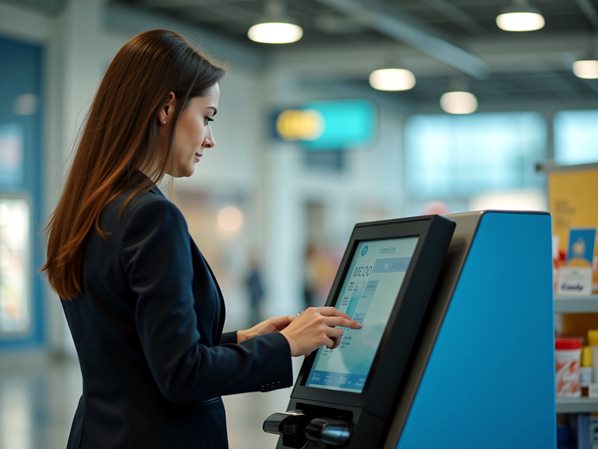
Personalized self-service has quickly become a necessity for businesses in an era where convenience and efficiency are non-negotiable for customers.
Customers today expect faster resolutions, intuitive experiences, and tailored interactions when they engage with your brand. But how can businesses, particularly retailers, deliver seamless, personalized self-service across various channels without compromising user satisfaction? Here’s a practical guide to help you succeed.
Why Self-Service is Critical to Customer Satisfaction
Self-service, when done right, empowers customers to resolve their queries, complete their purchases, or find the information they need at their own pace. It reduces dependence on staff, saves time, and enhances customer autonomy.
According to a study, 67% of customers prefer self-service over speaking to a representative. However, clunky, impersonal self-service tools can frustrate users, leading to dissatisfaction and lost revenue.
To deliver top-notch self-service, businesses must focus on two critical aspects:
- Seamlessness: Customers should be able to start their experience on one channel and effortlessly continue it on another without distractions or inconsistencies.
- Personalization: Self-service should adapt to customers’ preferences, needs, and past behavior to feel intuitive and tailored.
Here’s how to get it right.
5 Strategies to Deliver Seamless, Personalized Self-Service Across Channels
1. Unify Customer Data Across Channels
One of the biggest challenges in delivering seamless self-service is the lack of a centralized view of the customer. When a customer switches between channels, the absence of shared data often forces them to start over, which impacts their experience negatively.
To prevent this:
- Integrate your CRM, live chat tools, and self-service platforms to create a unified customer profile.
- Allow data from past interactions, purchase history, and preferences to flow across all channels, so the customer doesn’t have to repeat themselves.
- Invest in AI-powered tools that can quickly analyze customer data and offer intelligent self-service recommendations.
For example, if a customer frequently browses kitchen appliances on your website, their self-service options should prioritize relevant how-to guides, FAQs, or product availability for that category.
2. Make Self-Service Available Across Key Touchpoints
It’s important to meet customers where they are by embedding self-service options across all the platforms they use. This includes:
- Websites: Add FAQs, self-service help centers, product comparison tools, and AI-chatbots on your website to assist visitors.
- Mobile Apps: Optimize your app for self-service by enabling features like personalized search, quick troubleshooting guides, and order tracking.
- Social Media: Platforms like Facebook and Instagram allow for automated messaging. Use this feature to provide self-service options such as tracking orders or answering common questions.
- Kiosks and Smart Devices: For physical locations, deploy kiosks with self-service capabilities where customers can access additional product information or place orders.
Once your self-service offerings are present on all key touchpoints, ensure they are consistent in design, functionality, and data management.
3. Leverage AI to Deliver Personalization
Artificial intelligence (AI) is a game-changer for self-service personalization. By analyzing customer behavior and preferences, AI-powered self-service tools can provide tailored suggestions and solutions with minimal human intervention. Here’s how:
- Personalized Recommendations: Suggest relevant products, solutions, or resources based on customers’ browsing and purchase history.
- Natural Language Processing (NLP): Implement NLP-powered chatbots to understand and respond to customer queries in a conversational tone.
- Dynamic Content: Fine-tune your knowledge base or FAQ page to prioritize commonly viewed or personally relevant content for specific customers.
For instance, AI tools like Zendesk or Freshdesk can suggest relevant help articles in real time, improving the likelihood of a self-service resolution.
4. Focus on Simplicity and Accessibility
A self-service platform must be intuitive and accessible to all users. Complicated navigation or unclear instructions can push customers away from self-service tools and back to higher-cost support channels like call centers.
Key steps to improve accessibility include:
- Design user-friendly interfaces with clear labels.
- Ensure your self-service tools comply with ADA and WCAG accessibility standards to cater to users with disabilities.
- Add multi-language support to assist customers from different regions.
- Offer step-by-step workflows to guide users toward resolving their queries smoothly.
A seamless experience starts with making self-service tools approachable for everyone, regardless of their technical proficiency.
5. Collect Feedback to Continuously Improve
Self-service channels are not a one-and-done implementation. To ensure your tools continue meeting customer expectations:
- Gather customer feedback through surveys, reviews, or direct feedback options within the self-service platform.
- Monitor key self-service performance metrics, such as usage rates, resolution rates, and average session duration.
- Identify common points of friction or failure in the self-service process and address them promptly.
For added efficiency, conduct regular audits of your self-service tools to ensure they align with evolving customer preferences and industry standards.

Real-World Benefits of Seamless, Personalized Self-Service
When implemented effectively, seamless and personalized self-service can unlock significant benefits, including:
- Enhanced Customer Satisfaction: Providing easy-to-use and tailored solutions ensures customers leave with a positive impression of your brand.
- Reduced Operational Costs: Self-service tools can handle repetitive queries, freeing up customer service agents to focus on complex issues.
- Better Customer Retention: Customers are more likely to stay loyal to brands that prioritize their convenience and deliver consistently smooth experiences.
For example, a leading retailer introduced AI-driven self-service kiosks that allowed customers to resolve in-store issues such as stock inquiries or returns on their own. The result? A 45% drop in call center inquiries and a 25% increase in customer satisfaction scores.
Exceed Customer Expectatios
Delivering seamless, personalized self-service may seem daunting, but the payoff is well worth the effort. With unified data, AI-driven tools, accessible design, and continuous optimization, businesses can ensure their self-service offerings meet and exceed customer expectations.




